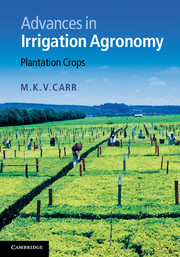2 - Banana
Published online by Cambridge University Press: 05 May 2012
Summary
Introduction
The centre of origin of the wild banana Musa species, a giant perennial herb, is believed to be in South-east Asia, where it opportunistically exploits breaks in the rainforest such as river margins (Simmonds, 1962). Wild bananas are jungle weeds, pioneers in the succession to rainforest, and intolerant of shade (Price, 1995). From here, the banana is believed to have spread outwards into the Pacific and then westwards, reaching sub-Saharan Africa about two thousand years ago. The banana became a staple crop in upland East/Central Africa, which is still the greatest centre of cultivation. In the sixteenth century, early European travellers may have taken the banana from West Africa across the Atlantic Ocean to the Americas where it was quickly adopted (Simmonds, 1995).
Bananas can now be found throughout the tropics and subtropics. They are mostly grown between latitudes 30° N and 30° S of the equator, at altitudes up to about 1500 m, except in central and eastern Africa where some clones are grown up to 2000 m (Stover and Simmonds, 1987). In the tropics, they are grown for subsistence and as a cash crop, and play a very important role in diets and in local domestic economies (Figure 2.1). The fruit can be eaten either fresh or after cooking, used for brewing, sold in local markets or exported. The leaves and leaf sheaths are variously used as animal feed, to wrap food for steaming, for thatching, for making mats and ropes, and in handicrafts. In these diverse ways bananas support the livelihoods of millions of people (Fleuret and Fleuret, 1985; van Asten et al., 2011).
- Type
- Chapter
- Information
- Advances in Irrigation AgronomyPlantation Crops, pp. 14 - 52Publisher: Cambridge University PressPrint publication year: 2012

